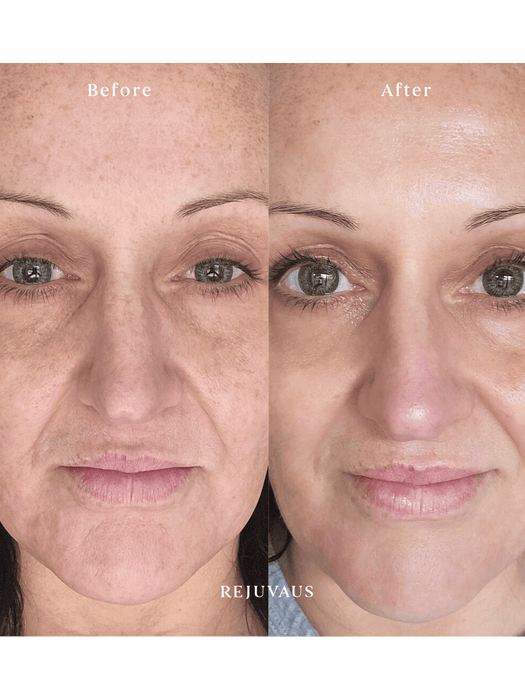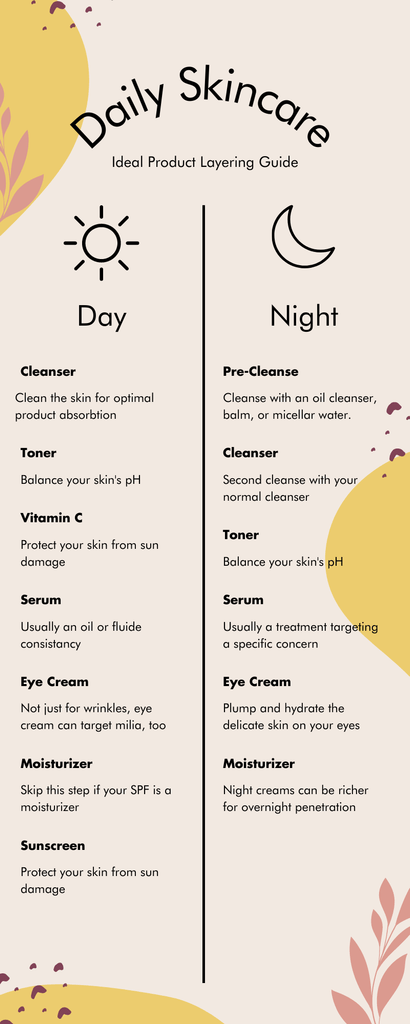If you’re struggling with stubborn acne or uneven skin texture, adapting your skincare routine might be the key to clearer, smoother skin. Adapalene is a powerful ingredient that can transform your complexion, but using it the right way is essential to avoid irritation and get the best results.
You’ll discover a simple, step-by-step adapalene skincare routine designed to fit your daily life. By the end, you’ll know exactly how to make adapalene work for your skin, helping you feel confident and radiant every day. Keep reading to unlock the secrets to flawless skin with adapalene.

Credit: www.pennsmithskincare.com
Benefits Of Adapalene
Adapalene offers many benefits for clear and healthy skin. It gently treats acne and helps prevent future breakouts. This skincare ingredient fits well into daily routines. It improves skin texture and tone over time. Many people find their skin looks smoother and feels softer with regular use.
How Adapalene Works
Adapalene is a type of retinoid. It works by speeding up skin cell turnover. Dead skin cells are shed faster, clearing pores. It also reduces inflammation and redness. This helps calm irritated skin. The result is fewer clogged pores and pimples.
Skin Concerns It Targets
- Acne breakouts, including whiteheads and blackheads
- Redness and swelling from acne
- Uneven skin texture and rough patches
- Dark spots and acne scars
Adapalene can be a strong ally against these issues.
Long-term Effects
With consistent use, adapalene improves skin health deeply. It prevents new acne from forming. Skin becomes smoother and more even-toned. It also reduces the risk of scarring. Over time, skin looks clearer and feels firmer. Patience is key; results appear gradually.
Choosing The Right Adapalene Product
Choosing the right adapalene product can change how effective your skincare routine is. This decision depends on your skin type, the severity of your acne, and your personal preferences. Understanding the differences between products can help you avoid irritation and get the best results.
Creams Vs Gels
Creams tend to be thicker and more moisturizing, making them a good choice if you have dry or sensitive skin. They often contain ingredients that soothe and hydrate while delivering adapalene.
Gels feel lighter and dry faster on the skin. If you have oily or acne-prone skin, gels might work better because they don’t add extra moisture or clog pores.
Think about how your skin reacts to different textures. Have you noticed creams feeling heavy or gels causing dryness? This can guide your choice.
Strength Levels
Adapalene products come in different strengths, usually 0.1% and 0.3%. Starting with a lower strength reduces the chance of irritation and allows your skin to build tolerance.
If your acne is severe, a higher strength might be more effective, but it can also increase dryness and redness. Monitor how your skin responds and adjust accordingly.
Ask yourself: How has your skin handled retinoids or similar treatments before? This can help you pick the right concentration to start with.
Prescription Vs Over-the-counter
You can find adapalene in both prescription and over-the-counter (OTC) forms. OTC versions are usually 0.1% strength and safe for most users to try on their own.
Prescription adapalene may have higher strengths or be combined with other acne-fighting ingredients. A dermatologist can help tailor this to your needs.
Consider your skin history—if you have tried OTC products without success, consulting a doctor might be your best next step.
Preparing Your Skin
Preparing your skin before using adapalene is important for better results and less irritation. Clean skin helps the product work well. Proper preparation also protects your skin’s natural barrier.
Cleansing Tips
Use a gentle cleanser to wash your face. Avoid harsh soaps or scrubs that dry out your skin. Rinse with lukewarm water to keep your skin calm. Pat your skin dry with a soft towel. Avoid rubbing, which can cause irritation.
Exfoliation Guidelines
Exfoliate your skin carefully. Use mild exfoliants only 1-2 times a week. Avoid strong scrubs or chemical peels. Over-exfoliation can make your skin sensitive to adapalene. Stick to gentle methods to remove dead skin cells.
Moisturizing Before Use
Apply a light, non-comedogenic moisturizer before adapalene. This step helps reduce dryness and redness. Wait a few minutes after moisturizing before applying adapalene. Moisturizing creates a barrier to protect your skin.

Credit: destinationdermblog.com
Step-by-step Adapalene Routine
Starting an adapalene skincare routine can feel overwhelming, but breaking it down into simple steps makes it manageable and effective. Understanding how to apply adapalene, when to use it, and how to mix it with other products ensures you get the best results without irritation. Let’s walk through the essential steps that will make adapalene a natural part of your daily routine.
Applying Adapalene Correctly
Begin with a clean, dry face. Use a gentle cleanser that doesn’t strip your skin’s natural oils.
Apply a pea-sized amount of adapalene to your entire face, avoiding the eyes, lips, and any broken skin. Spreading it thinly and evenly helps prevent irritation and maximizes absorption.
Remember, more isn’t better—overusing adapalene can cause redness and dryness. Patience is key; your skin needs time to adjust.
Frequency And Timing
Most people start by applying adapalene every other night. This reduces the risk of irritation while your skin builds tolerance.
Once your skin adapts, you can move to nightly application. Applying it at night is best because adapalene can increase your skin’s sensitivity to sunlight.
Don’t forget to use sunscreen every morning. Protecting your skin during the day is crucial to avoid sun damage and maintain the benefits of adapalene.
Incorporating Other Products
Keep your routine simple when you start using adapalene. Avoid harsh exfoliants, alcohol-based toners, and other strong active ingredients that can irritate your skin.
Hydrating products like moisturizers with ceramides or hyaluronic acid help combat dryness caused by adapalene. Apply moisturizer after adapalene to soothe and protect your skin barrier.
Ask yourself: Are your current products calming or aggravating your skin? Adjusting your routine to support adapalene makes a big difference in comfort and results.
Managing Side Effects
Using adapalene in your skincare routine can bring noticeable improvements, but it often comes with some side effects. Managing these reactions effectively helps you stay consistent without discomfort. Understanding what to expect and how to care for your skin during this adjustment phase is key to long-term success.
Common Reactions
Many people notice dryness, redness, or mild peeling when they start using adapalene. These are signs your skin is adjusting to the treatment. It’s normal for these effects to appear within the first few weeks.
You might also feel a slight burning or stinging sensation after application. This usually fades quickly but can be bothersome at first. Knowing these reactions are temporary can help you stay patient.
Reducing Irritation
If irritation becomes too much, try applying adapalene every other night instead of daily. This gives your skin more time to adapt. You can slowly increase frequency once your skin feels comfortable.
- Use a gentle, fragrance-free moisturizer to soothe dryness.
- Avoid harsh cleansers or exfoliants that can worsen irritation.
- Apply adapalene to clean, dry skin and wait a few minutes before moisturizing.
Have you ever pushed through discomfort only to make it worse? Slowing down can actually speed up your overall progress.
When To Consult A Dermatologist
Sometimes, side effects may go beyond mild irritation. If you experience severe redness, swelling, or intense burning, it’s time to reach out to a dermatologist. These symptoms could signal an allergic reaction or improper use.
Also, if your skin shows signs of infection or doesn’t improve after several weeks, professional advice can prevent further issues. Don’t hesitate to ask for help—your skin health is worth it.
Credit: www.lemon8-app.com
Enhancing Results
Enhancing the effects of your adapalene skincare routine goes beyond just applying the product. Small adjustments in your overall skincare and daily habits can make a significant difference. Let’s look at how to boost your results effectively and safely.
Complementary Skincare Ingredients
Pairing adapalene with the right ingredients can improve its effectiveness and reduce irritation. Look for gentle moisturizers containing ceramides or hyaluronic acid to keep your skin hydrated without clogging pores.
Vitamin C serums can brighten your skin, but use them at different times of the day to avoid irritation. Avoid combining adapalene with strong exfoliants like AHAs or BHAs on the same day unless your skin is well-adjusted.
Sun Protection Strategies
Adapalene makes your skin more sensitive to sunlight, so daily sun protection is crucial. Use a broad-spectrum sunscreen with at least SPF 30 every morning, even on cloudy days or indoors near windows.
Consider wearing hats and seeking shade during peak sun hours. Think about how skipping sunscreen once or twice led to redness or peeling—wouldn’t it be better to protect your skin consistently?
Diet And Lifestyle Tips
What you eat can affect how your skin heals and responds to adapalene. Foods rich in antioxidants like berries, leafy greens, and nuts support skin health from within.
Stay hydrated and limit sugar and dairy if you notice they trigger breakouts. Managing stress through exercise or meditation also helps your skin stay calm and balanced.
Frequently Asked Questions
What Is The Best Time To Apply Adapalene?
Apply adapalene once daily at night. Cleanse your face, dry it completely, then apply a thin layer. Nighttime use reduces sun sensitivity and improves effectiveness.
How To Avoid Dryness With Adapalene Routine?
Use a gentle moisturizer after adapalene application. Start with every other night to let skin adjust. Avoid harsh cleansers and exfoliants to minimize irritation and dryness.
Can I Use Adapalene With Other Skincare Products?
Yes, but avoid combining with strong acids or retinoids. Use mild cleansers and moisturizers. Always patch test new products to prevent irritation while using adapalene.
How Long Does Adapalene Take To Show Results?
Visible improvements usually appear after 8 to 12 weeks. Consistent use is essential for best results. Initial irritation may occur but typically lessens over time.
Conclusion
Adapalene can enhance your skincare routine effectively. Consistency is key for visible results. Cleanse your skin gently before applying adapalene. Moisturize to maintain hydration and balance. Sun protection is crucial when using adapalene. Seek products with SPF for daily use.
Patience is important; results may take time. Adapt the routine to your skin type. Consult a dermatologist for personalized advice. Stay committed for clearer, healthier skin.




